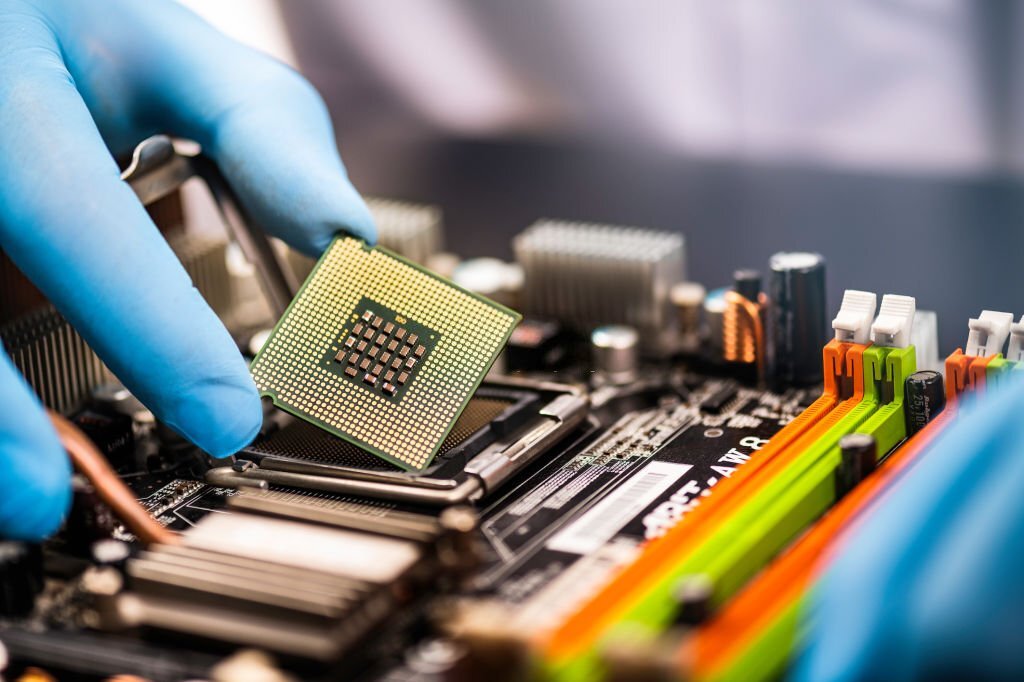If you’re looking to learn more about hardware, you’ve come to the right place! In this article, we’ll explore what hardware is, the different types available, and provide real-life examples to help you understand it better.
In today’s digital age, hardware has become an integral part of our daily lives. From our smartphones and laptops to our home appliances and cars, hardware is everywhere. But what is hardware, exactly?
What is Hardware?
Hardware is the physical components of a computer or electronic device. These are the tangible parts that you can touch and see, such as the motherboard, CPU, RAM, hard drive, keyboard, and mouse. In simple terms, hardware is what makes a computer or electronic device work. These hardware components work together with software to perform various tasks and allow us to interact with the digital world.
Key Takeaway
- Computer hardware refers to the physical components of a computer.
- The essential components of a computer are the CPU, RAM, motherboard, storage devices (HDD/SSD), and I/O devices (keyboard, mouse, monitor, etc.).
- The CPU is the brain of the computer, responsible for processing and executing instructions.
- RAM is the temporary storage space that allows the computer to access data quickly.
- The motherboard is the main circuit board that connects all the hardware components of the computer.
- HDDs and SSDs are storage devices that store all the data and files on the computer.
- I/O devices, such as keyboards, mice, and monitors, allow users to interact with the computer and perform tasks.
- Upgrading or replacing hardware components can improve a computer’s performance and functionality.
Types of Hardwares
There are various types of hardware available, and each plays a different role in making a computer or electronic device function. Here are some of the most common types of hardware:
- Central Processing Unit (CPU): The CPU is the brain of the computer. It performs all the calculations and logical operations required to run the computer.
- Random Access Memory (RAM): RAM is the temporary storage space where the computer stores data that it needs to access quickly. The more RAM a computer has, the faster it can perform tasks.
- Hard Disk Drive (HDD): The HDD is the primary storage device in a computer. It stores all the data and files on the computer, including the operating system, software, and user files.
- Solid State Drive (SSD): An SSD is a newer type of storage device that uses flash memory to store data. It’s faster than an HDD and more reliable since it has no moving parts.
- Motherboard: The motherboard is the main circuit board in a computer. It connects all the hardware components together and allows them to communicate with each other.
- Graphics Processing Unit (GPU): The GPU is responsible for rendering images and videos on the computer. It’s essential for tasks such as gaming, video editing, and graphic design.
- Input/Output (I/O) Devices: These include devices such as keyboards, mice, monitors, printers, and scanners. They allow the user to interact with the computer and perform tasks.
What are Examples of Hardwares?
Now that we know the different types of hardware let’s explore some real-life examples to help you understand it better:
- Desktop Computer: A desktop computer is a common example of hardware. It includes a CPU, RAM, HDD/SSD, motherboard, GPU, and I/O devices such as a keyboard and mouse.
- Laptop: A laptop is a portable computer that includes all the hardware components of a desktop computer but in a smaller form factor. It has a built-in monitor, keyboard, and touchpad for input.
- Smartphone: A smartphone is a handheld device that includes a CPU, RAM, storage, GPU, and I/O devices such as a touchscreen, camera, and microphone.
- Smartwatch: A smartwatch is a wearable device that includes a CPU, RAM, storage, and I/O devices such as a touchscreen and sensors for tracking fitness data.
- Home Appliances: Hardware is also present in various home appliances such as refrigerators, washing machines, and televisions. These devices include circuit boards, sensors, and other hardware components that help them function.
Understanding Hardwares
Understanding what hardware is, the types available, and real-life examples is crucial in today’s digital world. Whether you’re using a computer or a smartwatch, hardware is the backbone of these devices, enabling them to function and perform tasks.
As technology continues to evolve, hardware will play an even more critical role in our daily lives. It’s essential to stay up to date with the latest trends and technologies in hardware to take advantage of their full potential.
Remember, hardware is not only limited to computers and electronic devices. It’s also present in everyday objects, such as home appliances. By understanding the different types of hardware, we can better appreciate the technology that surrounds us.
So, the next time you use a computer, smartphone, or any other electronic device, take a moment to appreciate the hardware that makes it all possible.
FAQs on Hardware
What is the difference between hardware and software?
Hardware refers to the physical components of a computer, while software consists of the programs and applications that run on the hardware. Hardware is tangible and can be touched, whereas software is intangible and exists as digital code.
What is the difference between hardware and software?
Hardware refers to the physical components of a computer or electronic device, while software refers to the programs and applications that run on the appliance. Hardware is necessary for software to function, but software is not required for hardware to function.
Can hardware be upgraded or replaced?
Yes, hardware can be upgraded or replaced. For example, you can replace the hard drive in a computer with a larger one or upgrade the RAM to increase its performance. However, some components may be difficult or impossible to replace, depending on the device.
Can I mix and match hardware from different brands?
Yes, you can use hardware from different brands, as long as the components are compatible with your system. For example, you can use an AMD CPU with an NVIDIA GPU, or a Samsung SSD with a Seagate HDD.
Are there any environmental concerns related to hardware?
Yes, there are environmental concerns related to hardware. Electronic waste, or e-waste, is a growing problem, as old or broken hardware is often disposed of improperly. This can lead to pollution and health hazards, as well as the loss of valuable resources. It’s important to dispose of hardware responsibly and recycle as much of it as possible.
What are some emerging technologies in hardware?
Some emerging technologies in hardware include artificial intelligence chips, quantum computing, and wearable technology. These technologies have the potential to revolutionize the way we interact with and use hardware in the future.
See also: All Technology Terms Explained
Conclusion
Hardware is an essential component of any computer or electronic device. It refers to the physical components of a device, such as the CPU, RAM, HDD/SSD, motherboard, and I/O devices.
There are various types of hardware available, each with its own unique functions and purposes. Real-life examples of hardware include desktop computers, laptops, smartphones, smartwatches, and home appliances.
As technology continues to advance, new and innovative hardware will be developed to meet the changing needs of consumers. It’s important to stay informed about the latest hardware trends and technologies to stay ahead of the curve.
And, as always, it’s important to dispose of hardware responsibly to protect the environment and preserve valuable resources.
See what others are reading:


